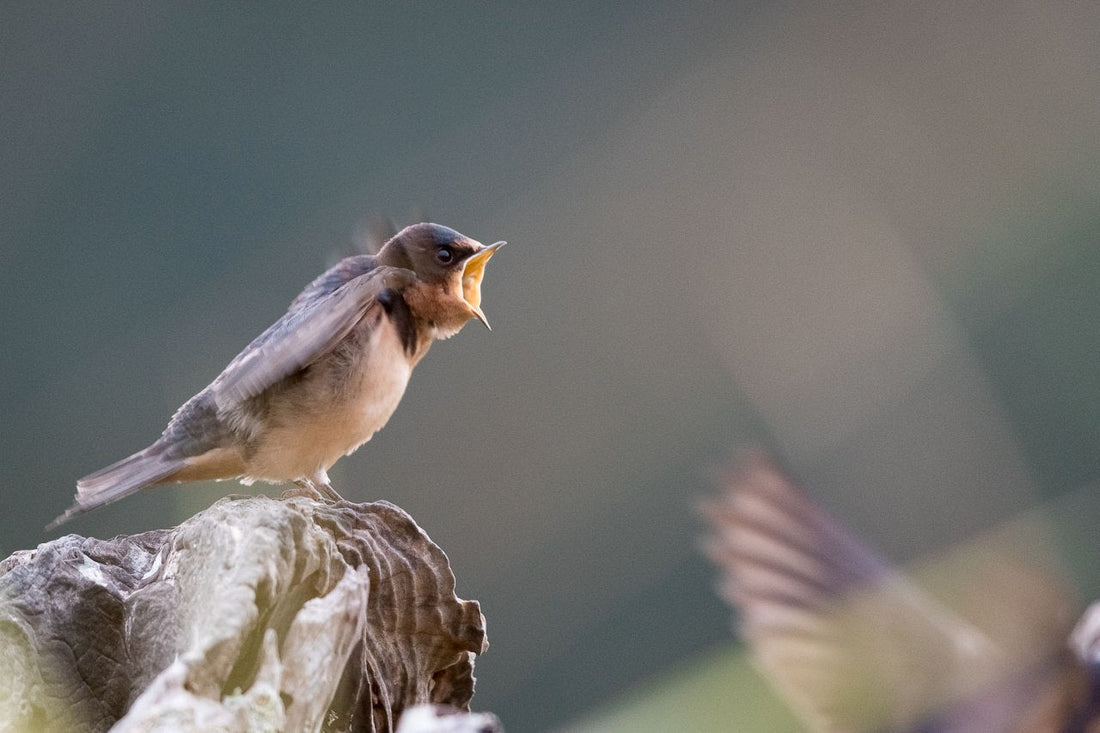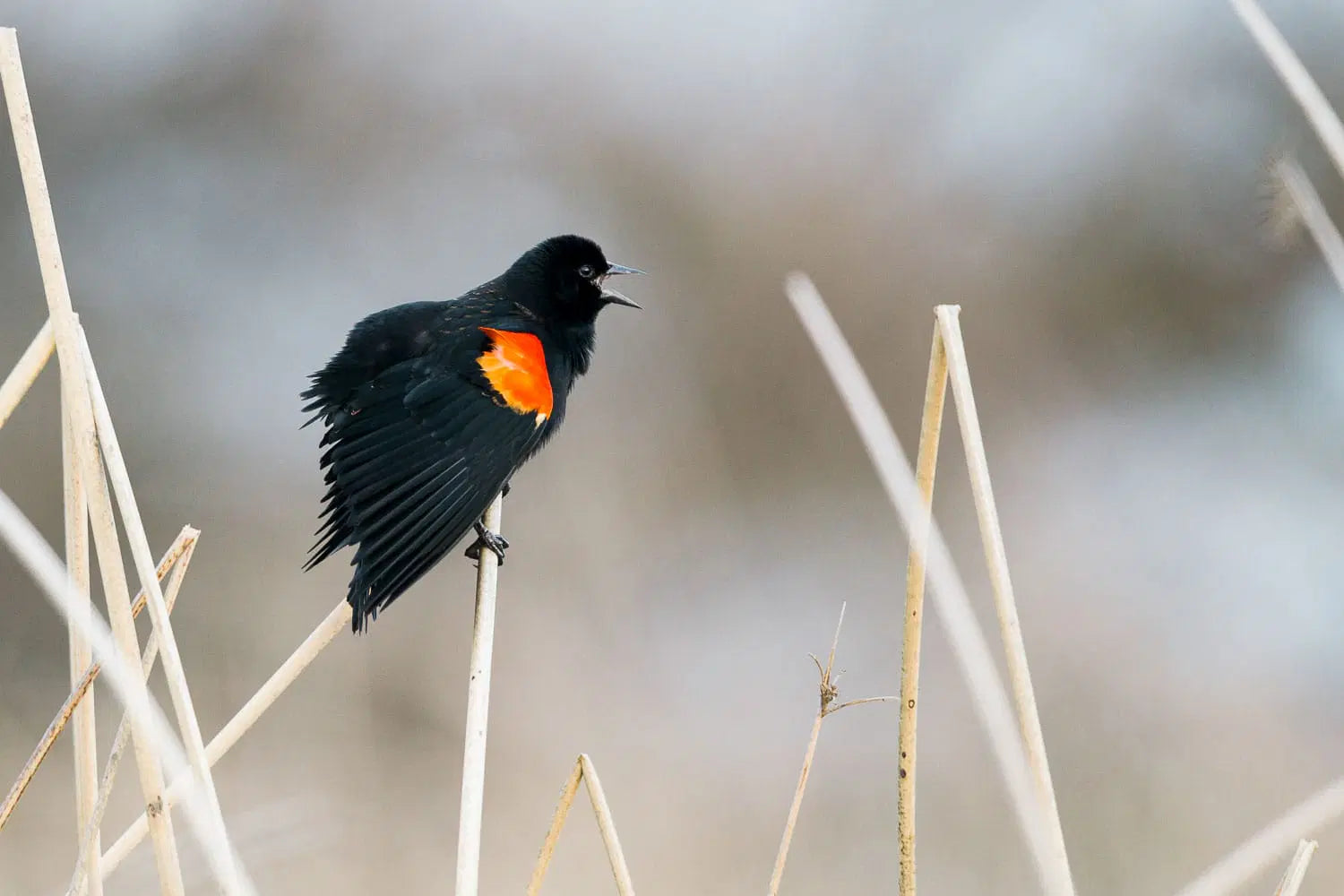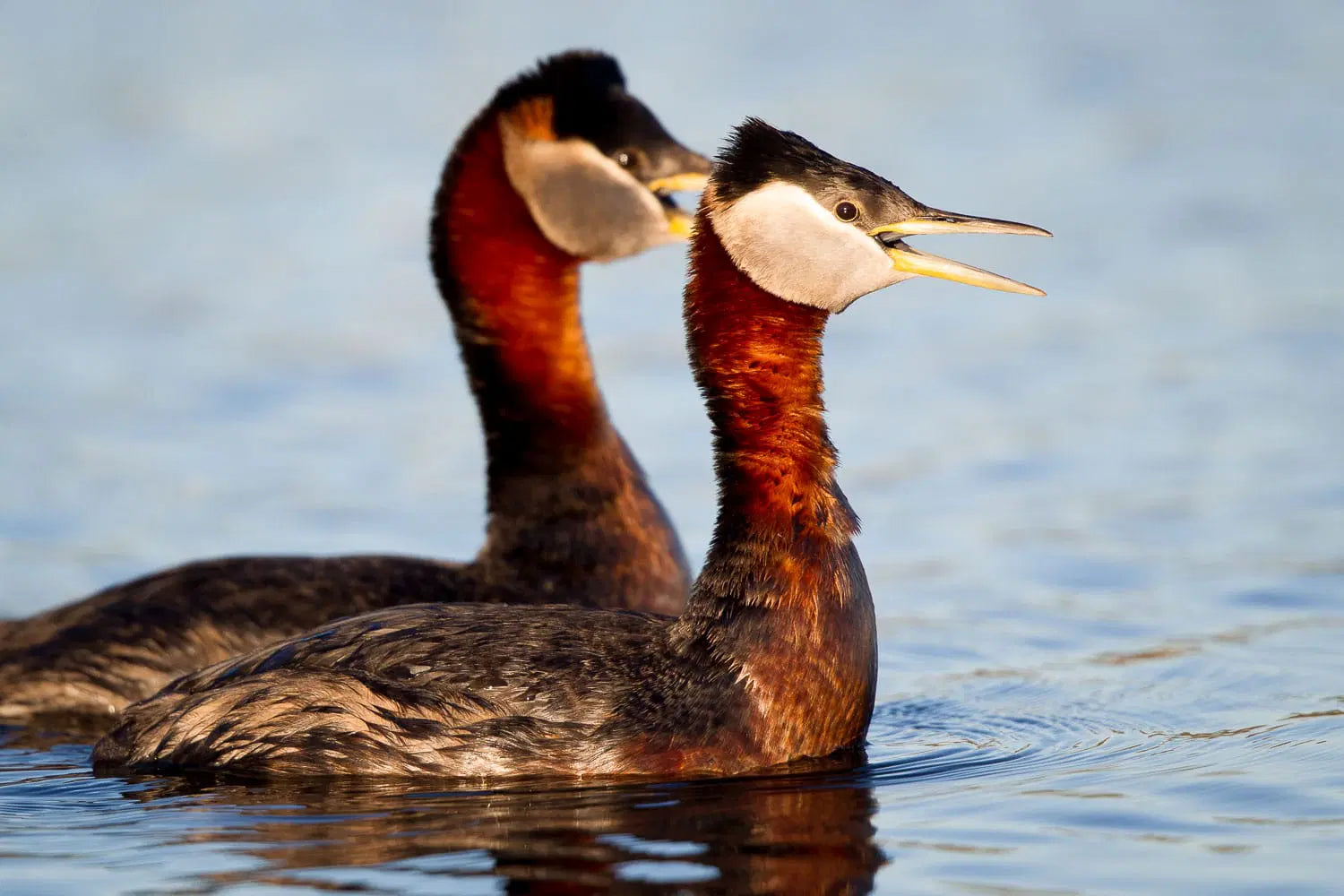Do Birds Have Ears? Bird Hearing Explained
Feature photo: Jaymi Heimbuch
Read Time: 7 minutes

This post contains affiliate links. If you use these links to buy something, we may earn a commission at no additional cost to you. We only recommend products we fully support or use ourselves. Our full disclaimer
PIN THIS FOR LATER

Contents
You’ve probably noticed birds doing a lot of impressive things—flying, singing, judging you from a tree branch—but one thing you haven’t noticed? Ears. So, do birds actually have them, or are they just faking it ‘til they make it on the sound front?
The short answer: yes, birds have ears. The longer, way-more-fun answer involves invisible ear holes, feather flaps, and some wildly underrated listening skills.
Let’s take a closer look at how birds are out here hearing everything—even if they don’t have cute little earflaps to prove it.
Where Are Birds' Ears Located?
Birds definitely have ears, just not the kind you're probably picturing. Instead of those obvious ear flaps we mammals have, birds have plain old holes in their heads. Seriously - just little openings covered up by feathers.
If you look at a bird (good luck getting one to sit still long enough), you'll notice they have feathers that look slightly different on the sides of their heads - usually behind and below their eyes.
These are called "auriculars" or "ear coverts" and they're basically the bird equivalent of ear muffs. Brush those aside and you'd find a small opening that leads to their ear canal.
It's weird to think about, right? All those birds you've seen your entire life have had ears hiding in plain sight.
We give 20% of all shop profits to bird conservation & inclusive birding efforts.
Why Don't Birds Have External Ear Flaps?
The simple answer? Because floppy ear flaps would be terrible for flying.
Think about it - birds are built for aerodynamics. Having two pieces of cartilage sticking out would create drag and mess with their flight. Since flight is kind of their whole deal, evolution was like "nope, let's streamline this."
There's also the fact that birds evolved from reptiles, which don't have external ears either. Mammals took a different evolutionary path and developed those outer ears separately. So it's not that birds lost their ear flaps - they never had them to begin with.
Even birds that don't fly, like ostriches, don't have external ears. They're stuck with what they inherited from their flying ancestors, which makes sense. Evolution doesn't start from scratch - it works with what's already there.
How Well Can Birds Actually Hear?
Pretty well, actually.
Birds generally don't hear as wide a range of sounds as we do. Humans can hear from about 20 Hz to 20,000 Hz (though that upper range drops as we get older...sigh). Most birds hear between 1,000 Hz and 4,000 Hz. But within that range? They're hearing machines.
Take owls. These nocturnal hunters can hear a mouse rustling under SNOW. That's bananas. Their whole hunting strategy relies on hearing tiny sounds in complete darkness and pinpointing exactly where they're coming from.
The craziest thing about bird hearing is that many birds can actually regenerate the hair cells in their inner ears. When we humans damage those cells (too many concerts, getting older, etc.), they're gone forever and our hearing deteriorates. Birds just grow new ones. Talk about unfair, right?
We give 20% of all shop profits to bird conservation & inclusive birding efforts.
How Do Owls Hear So Well In The Dark?
When it comes to hearing, owls play in their own league, complete with asymmetrical ears and spooky-good accuracy.
Their whole head is basically designed as a satellite dish for sound.
Some owl species have ear openings that aren't even placed symmetrically on their head - one ear is higher than the other. This weird setup creates a tiny difference in when sound reaches each ear, which lets them triangulate exactly where a sound is coming from in 3D space.
It's like having built-in surround sound processing in your brain. An owl can sit on a branch in pitch darkness and strike with deadly accuracy based ONLY on the sound a mouse makes while creeping through leaves.
This is also why many owl species have those dish-shaped faces - the feathers around their face are arranged to capture and direct sound toward their ear openings. Their entire head is basically a sound-catching device.
Can Birds Hear Better Than Humans?
"Better" is tricky here. Different, for sure.
Birds are incredibly sensitive to subtle differences in sound that matter to them. They can detect tiny variations in rhythm, pitch, and tone that we'd completely miss.
If you've ever seen a bird react to a recording of its own species' song, you might notice they sometimes ignore it completely. That's often because the recording doesn't sound quite right to them - they can tell it's "off" somehow, even when we think it sounds perfect.
Many birds can recognize individual voices too. A parent bird can identify its own chicks among dozens of identical-looking babies all making similar sounds. They're picking up on nuances that our ears just aren't tuned to notice.
Do Different Bird Species Have Different Hearing Abilities?

Horned lark in the central valley of California. Photo: Jaymi Heimbuch
Heck yeah! Just like they evolved different beaks for different foods, birds evolved different hearing specializations based on their lifestyle.
Water birds have special adaptations so they don't get ear infections every time they dive. Some can even close their ear openings underwater.
Forest birds that deal with tons of background noise (wind, rustling leaves, etc.) have evolved to hear specific frequencies that cut through all that noise.
Nocturnal migrants use their hearing as part of their navigation system. They listen for the calls of other migrating birds and can even detect infrasound from mountains and oceans as landmarks.
The amazing part is that birds in your yard are all hearing different versions of the same environment. That robin, sparrow, and woodpecker might be in the same space, but they're experiencing completely different soundscapes.
We give 20% of all shop profits to bird conservation & inclusive birding efforts.
How Do Birds Process Sound Without External Ears?
Without ear flaps to collect and funnel sound, birds use the shape of their entire head as a sound-gathering tool. The arrangement of their facial feathers actually helps direct sound into those hidden ear openings.
Once sound gets in, birds have a lot of the same ear structures we do - eardrum, middle ear bones, cochlea. But they process sound MUCH faster than we do.
Humans need about 1/15 of a second to process a sound. Birds can process sounds separated by just 1/200 of a second. This is why some birds can sing those crazy-fast trills and complex songs that sound like a blur to us. They're literally hearing in higher resolution.
When researchers slow down recordings of birds like the winter wren or mockingbird, what sounds like one continuous note to us is actually dozens of distinct sounds. These birds are singing complex melodies too fast for our brains to fully process.
How Can You Support Birds' Hearing Health?
With all our human noise, we're making life hell for birds that rely on hearing.
Birds in cities have started singing at higher pitches to be heard above traffic noise. Some species have switched to singing at night instead of during the day. Others just leave noisy areas entirely.
Want to help? Keep your yard as quiet as possible. Put feeders away from roads and noisy AC units. Plant trees and shrubs that create sound buffers. Be mindful of how much noise pollution you create.
And hey, if you're into birds enough to read this far, check out these stylish nature-themed outerwear options for your next birdwatching trip. Birds won't care what you're wearing, but you might as well be comfortable.











